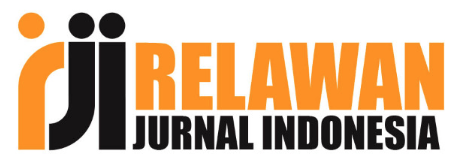Perencanaan Wisata Air Terjun Aek Martua Dengan Konsep Media Digital
Abstract
Arboretum is a Rokan Hulu Regency, there are various kinds of attractions, which consist of cultural tourism, culinary tourism, historical tourism, religious tourism and nature tourism. The natural tourism object in Rokan Hulu Regency is Aek Martua Waterfall. This waterfall has a height ranging from 15 meters to the highest reaching 40 meters. The uniqueness and privilege, makes many tourists call the Aek Martua Waterfall as the Thousand Stairs Waterfall. That is what creates a tourist attraction so that tourists visit there. The purpose of this study is to identify the potential and attraction of Aek Martua's water. Potential measurement using the One Score-One Indicator System Method, namely giving a score of 1 (one), for 1 (one) indicator, with the scale used is 1-7 (a development of the Likert scale 1-5). The use of scale 1-7 is applied because it is in accordance with the character of Indonesian society which articulates a value in great detail (Avenzora 2008). Value score 1-7. Potential Assessment and Tourism Attraction consisting of; (1) Uniqueness (2) Beauty (3) Scarcity (4) Timeliness (5) Accessibility (6) Sensitivity (7) Social Function with the average Potential and Attractiveness value of Aek Martua Waterfall (5.11), i.e. attractive, so what needs to be added are facilities and infrastructure as well as one-stop tour management.
Downloads
References
Altinay L dan Paraskevas A. 2008. Planning Research in Hospitality and Tourism. Burlington (US): Butterworth-Heinemann
Avenzora R. 2008. Ekoturisme-Teori dan Praktek. (ID): BRR NAD-Nias.
Butarbutar R, Soemarno. 2013. Environmental Effects of Ecotourism in Indonesia. Journal of Indonesian Tourism and Development Studies. E-ISSN: 2338-1647. Hlm 97-107.
Damanik J, Weber HF. 2006. Perencanaan Ekowisata dari Teori ke Aplikasi. Yogyakarta (ID): Penerbit Andi.
Gaol HL. 2008. Kajian potensi daya tarik wisata Gua Terawang dan Loko Wisata Hutan Jati, Cepu Kabupaten Blora dan kemungkinan pengembangannya. Jurnal Kepariwisataan Indonesia 3(3):413-426.
Gunn C.A. 1994. Tourism Planning Basics, Concepts, Cases. Third Edition. Tylor & Francis Ltd. London.
Jovicic D, Dragin A. 2008. The Assessement of Carrying Capacity-A Crucial Tool for Managing Tourism Effects in Tourist Destinaation. Turizam. Vol 12. Hlm 4-11.
Lagmoj AM, Shokry KA, Hashemi AS, Zadegan KH. 2013. Defining the Ecotourism Carrying Capacity of Langeroud City (Case Study: Khorma Forest). Greener Journal of Social Sciences. Vol. 3 (9), Hal 447-457.
Ngabito M, Tuwo A, Achmad A. 2012. Kesesuaian dan Daya Dukung Ekowisata Pulau Saronde Kabupaten Gorontalo Utara Provinsi Gorontalo. [Jurnal]. Gorontalo (ID): Universitas Hasanuddin.
Risnayanti, Febrisa. 2015.Strategi Promosi Penyelengaraam Wisata Outbound Dalam Meningkatkan Kunjungan di Taman Agro Wisata Bukit Naang Kabupaten Kampar. Jurnal Ilmu Manajemen (Daya Saing). Vol 1 (188-194).
Sabri A, Marlina L. 2015. Potensi Prosesi Balimau Kasai Sebagai Atraksi Wisata Budaya Dalam Melestarikan Adat dan Budaya di Desa Batu Belah Kecamatan Kampar Kabupaten Kampar. Jurnal Ilmu Manajemen (Daya Saing). Vol 1 (136-145).
Siburian R. 2006. Pengelolaan Taman Nasional Gunung Leuser bagian Bukit Lawang Berbasis Ekowisata. Jurnal Masyarakat dan Budaya, Vol. VIII No.I/2006. Hal 67-90. Jakarta.
Syaiful, Syech, A. 2015.Upaya Dinas Kebudayaan dan Pariwisata Mempromosikan Mesjid Raya Pulau Penyengat Sebagai Daerah Tujuan Wisata di Tanjung Pinang Kepulauan Riau. Jurnal Ilmu Manajemen (Daya Saing). Vol 1 (154-162).







